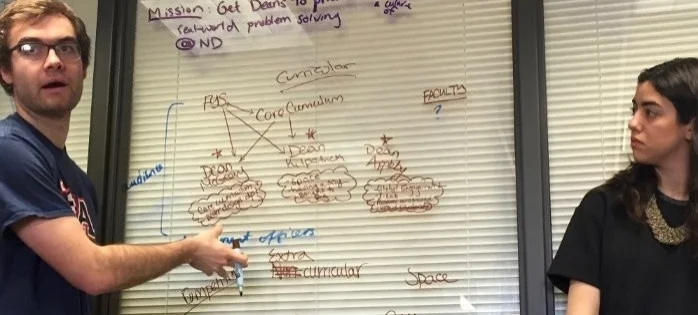As I researched for my “co-created” class on brainstorming, where a classmate and I developed and taught an interactive instructional session together, I came across articles claiming that brainstorming is not the panacea that many think. This argument shocked me. Brainstorming is so ingrained in group work across industries and in our education system, I had never questioned the effectiveness of brainstorming. Before preparing for my co-created class, my understanding of brainstorming was that groups are supposed to generate as many ideas as possible in a designated period of time. In addition, I thought that brainstorming in a group was a more productive way of coming up with creative solutions than brainstorming individually.
Brainstorming was first coined in the 1950s as atechnique by advertising executive Alex Osborn. Because of how popular brainstorming is today, I was surprised it was introduced relatively recently. In a series of books, Osborn outlined the essential rules of a successful brainstorming session. His most important principle was group members should withhold criticism when brainstorming, as ideas should not be evaluated until after generation is complete.
Similarly, in my experiences group members were instructed to focus on the quantity of ideas and to defer judgement, although in my experience I have found this to be difficult. Based on Osborn’s rules, brainstorming seems like an ideal way to boost productivity. However, as I became aware, brainstorming does not always work as advertised. Since his books were published, Osborn’s brainstorming technique has been tested numerous times. The results of these studies demonstrate that “brainstorming groups think of far fewer ideas than the same number of people who work alone and later pool their ideas (Sawyer, 60).” If the motivation behind brainstorming is coming up with as many ideas as possible, then this finding begs the question - what is causing the “productivity loss” of brainstorming groups -- that is less output than a similar number of people working individually?
There are several possible reasons explaining why brainstorming groups generate fewer ideas than individuals, according to researchers. The first is production blocking, or the tendency for a group member to inhibit others from offering their ideas. Another cause of productivity loss is social inhibition, which occurs when a group member holds back an idea out of fear of what others might think. Social loafing is a third cause for productivity loss. When people are working in a group, they do not feel as accountable as when they are working alone.
These reasons for productivity loss in brainstorming resonated with me, as I have experienced them all in my group projects to some extent. If brainstorming in groups is less productive than brainstorming individually, as the research demonstrates, then why does its popularity still persist? Groupthink.
Many academics attribute groupthink as the reason behind the lack of success of brainstorming. Groupthink describes situations in which a group makes a faulty decision because of pressure to maintain consensus. When group members place too much value on cohesiveness, they tend to follow the word of the leader and not to raise issues or alternative solutions.
Fortunately, there are ways to reconcile the studies of brainstorming and groupthink with the research showing the power of collaboration. For example, groups should not be used for tasks that people can do separately and then summed up, such as coming up with a list of ideas or solutions. For those who might be doubting whether there are any benefits of group brainstorming at this point, have no fear - groups undoubtedly provide some value.
Groups are effective in discussing, improving, and evaluating ideas, especially when members have a variety of skills, knowledge, and perspective. From this awareness of the potential dark side to collaboration, I am more conscientious about how to structure group and individual work to generate more creative and innovative ideas. After this co-created teaching experience, I developed a better understanding of brainstorming, including a recognition of its drawbacks and processes to mitigate them.
“From Groupthink to Group Genius.” Group Genius: the Creative Power of Collaboration, by Keith Sawyer, Basic Books, 2017.



